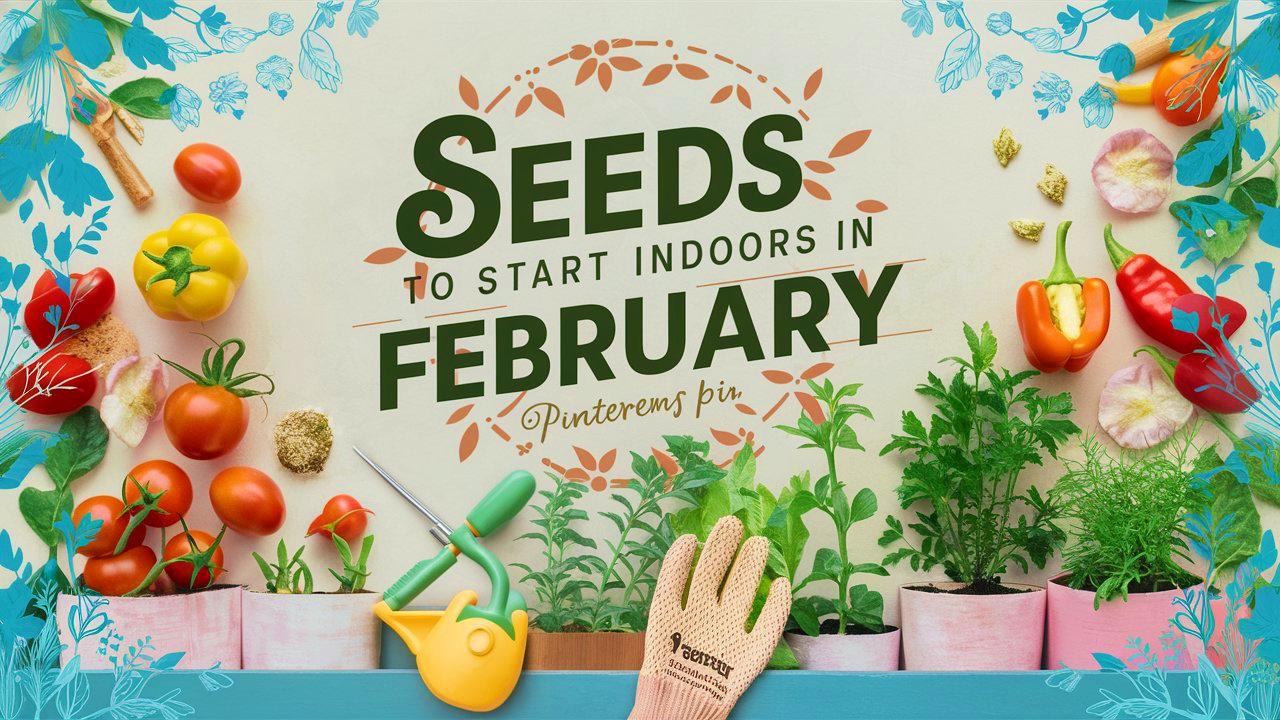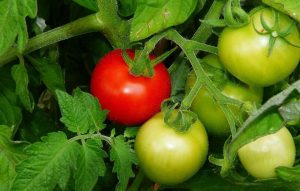As winter begins to recede, it’s the perfect moment to prepare for the growing season ahead by starting seeds indoors. This month offers a unique opportunity to nurture a wide variety of vegetables, flowers, and herbs that will flourish when planted out in the warmer months.
Here’s an in-depth look at the best plants to start indoors in February, specifically focusing on their unique characteristics, optimal planting conditions, and how to successfully nurture them through this crucial stage of growth.
Vegetables To Plant
When selecting vegetables to sow indoors in February, it’s essential to consider both the type of vegetable and your specific USDA zone, as the timing for transplanting outdoors varies significantly depending on frost dates and weather conditions.
Tomatoes
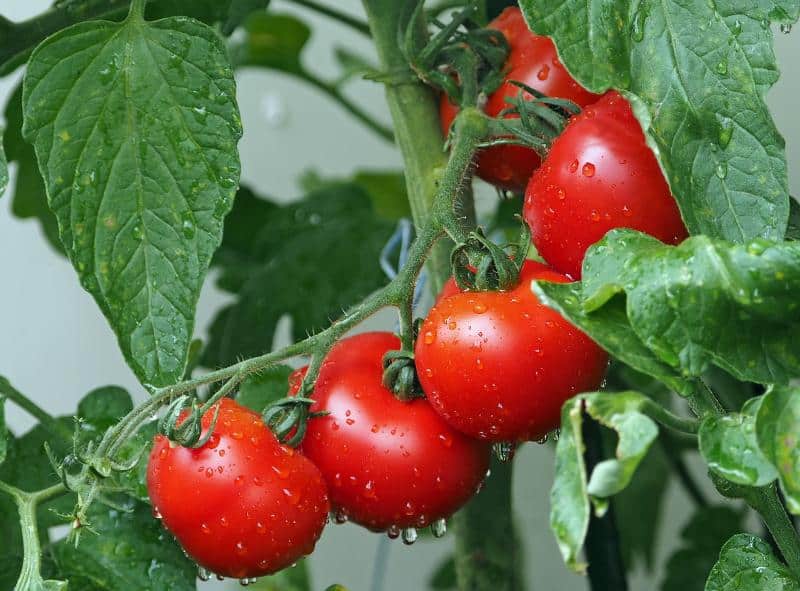
Tomatoes are a favorite among gardeners due to their versatility and the rich flavors they add to countless dishes. Starting tomatoes indoors in February allows you to harvest fresh fruits as early as mid-summer.
Temperature Tolerance: Tomatoes require warm conditions for optimal growth; they thrive best between 70°F to 80°F (21°C to 27°C). Young plants are particularly sensitive to frost, necessitating careful timing for their move outdoors.
Planting Instructions: Sow seeds about 1/4 inch deep in seedling trays or peat pots filled with seed-starting mix. Keep the soil consistently moist but not waterlogged. A heat mat can help maintain the necessary warmth for germination, which typically occurs within 5 to 10 days. Once seedlings have developed at least two sets of true leaves, they can be transplanted into larger pots for continued growth before moving outdoors.
Peppers
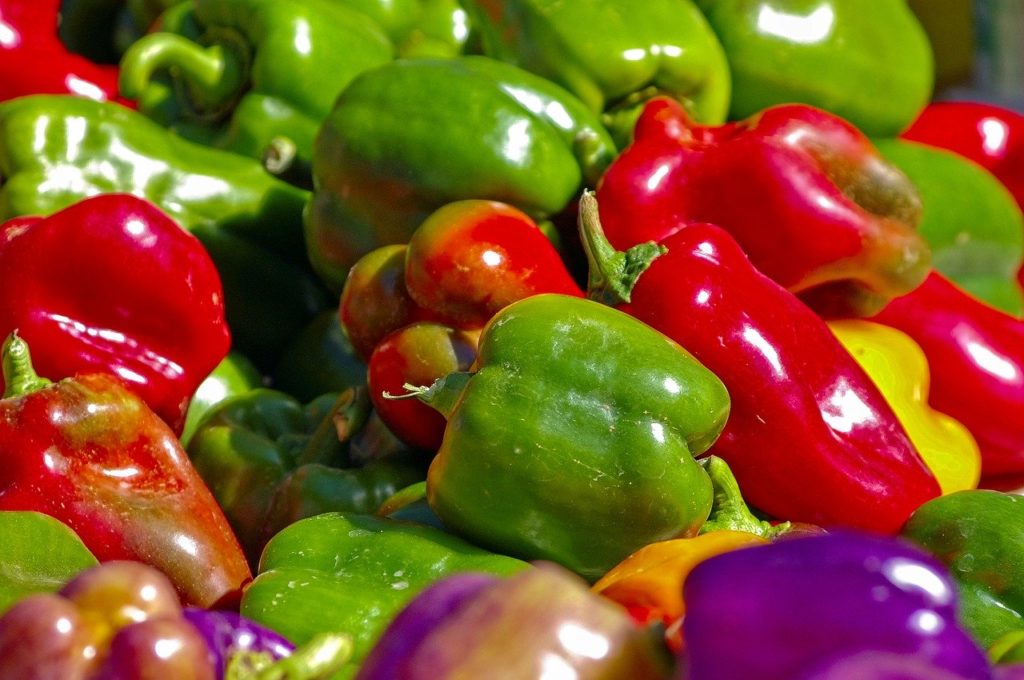
Peppers, from sweet bell peppers to hot varieties like jalapeños, are another excellent choice for early indoor sowing. These vibrant plants not only bear fruit but also add visual appeal to the garden.
Temperature Tolerance: Peppers prefer warm conditions and should be kept in temperatures above 65°F (18°C) during the night and 70°F to 80°F (21°C to 27°C) during the day.
Planting Instructions: Plant pepper seeds about 1/4 inch deep in a seed-starting mix. Provide bright light – using grow lights will help mimic the ideal conditions of full sun, promoting strong, healthy growth. Water the seedlings to maintain moisture but avoid over-watering, which can lead to damping-off disease.
USDA Zone Insights: Start seeds indoors from late-February in zones 6-7, with planned outdoor planting around late April. In warmer zones (8-10), consider starting seeds in early February.
Broccoli
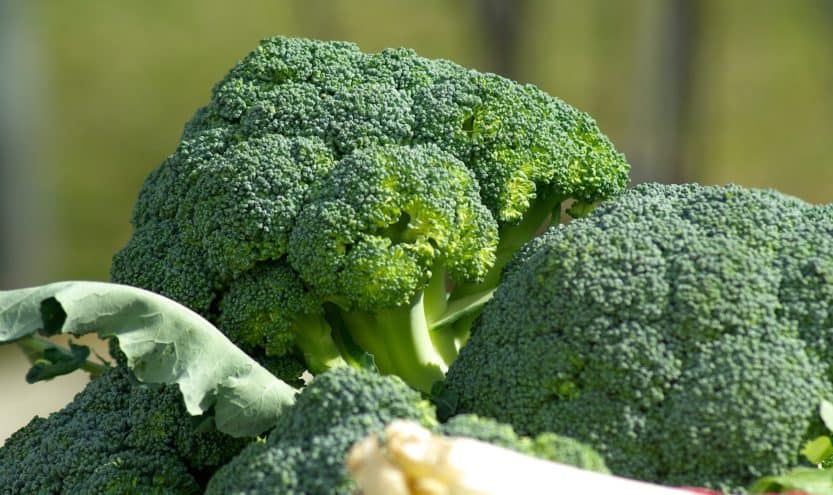
Broccoli is a nutrient-rich vegetable known for its dense, green florets. Starting it indoors ensures that you can enjoy a more bountiful spring harvest.
Temperature Tolerance: Broccoli germinates best at 65°F to 75°F (18°C to 24°C) and can withstand light frost. Ideal growing temperatures are slightly cooler than those preferred by many other vegetables.
Planting Instructions: Sow seeds about 1/4 to 1/2 inch deep in seed trays. Broccoli seeds germinate in about 7 to 14 days. Once seedlings have their first true leaves, thin them according to space (typically 2 to 4 inches apart) and be mindful to keep them well-watered.
USDA Zone Insights: In zones 3-4, sow seeds in late February to transplant in late March to early April. In zones 5-7, the same timing holds true, but early direct outdoor sowing could also be an option by late March. For zones 8-10, transplanting can occur as early as mid-March.
Cabbage
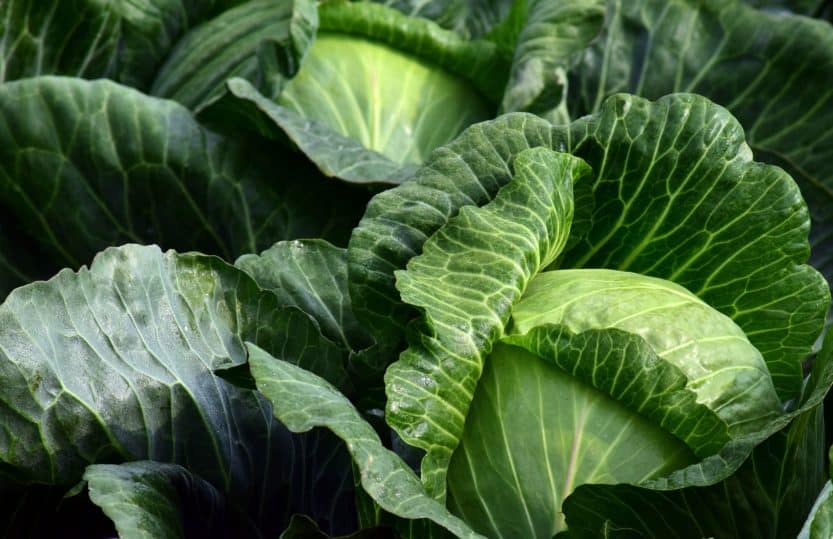
Cabbage is a hardy vegetable that provides a solid yield of green, leafy heads. As another cool-weather crop, it’s well-suited for early sowing.
Temperature Tolerance: Cabbage grows optimally in temperatures between 60°F to 70°F (15°C to 21°C) and is quite frost-tolerant, making it a solid choice for colder regions.
Planting Instructions: Sow seeds 1/4 to 1/2 inch deep in seed trays. Seedlings should emerge within 7 to 14 days. When the seedlings reach around 3 inches tall and have two sets of true leaves, begin hardening them off to prepare for outdoor transplanting.
USDA Zone Insights: In zones 3-4, seeds can be started indoors by late February, with outdoor planting occurring in late March to early April. Zones 5-6 allow you to start at the same time. Zones 7-10 provide more flexibility, often allowing year-round planting.
Cauliflower
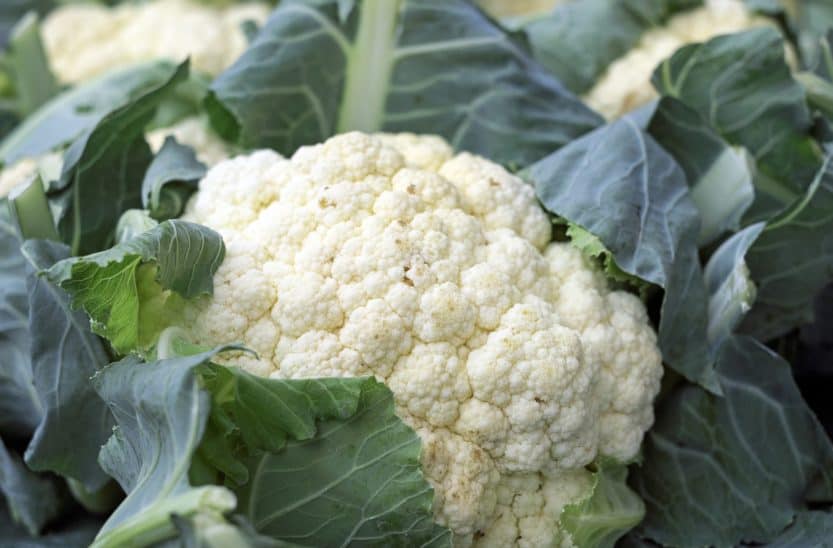
Cauliflower complements cabbage with its delicate florets and is ideal for those who enjoy this nutritious vegetable.
Temperature Tolerance: Cauliflower prefers cooler temperatures, ideally 60°F to 70°F (15°C to 21°C). It can survive light frosts but does not thrive in strong heat.
Planting Instructions: Similar to broccoli and cabbage, seeds should be sown 1/4 to 1/2 inch deep. Germination takes about 7 to 12 days. Once seedlings have a few true leaves, they should be acclimatized through hardening off before transplantation.
USDA Zone Insights: For zones 3-4, sow seeds indoors by mid to late February for planting outdoors in late March. For zones 5-7, continue the same sowing timeline, aiming for early to mid-April planting. In warmer zones (8-10), you can transplant earlier, leading to a spring harvest.
Lettuce
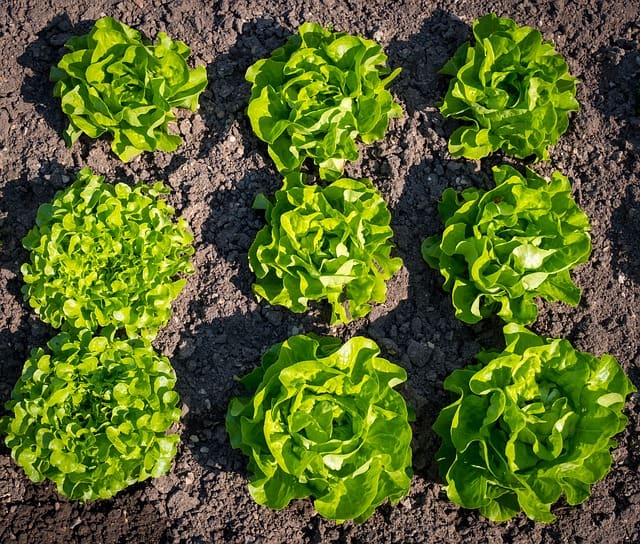
Lettuce varieties are highly versatile, offering plenty of options for salads and garnishes. Starting lettuce indoors allows for an earlier harvest.
Temperature Tolerance: Lettuce grows best in cooler conditions of around 60°F to 65°F (15°C to 18°C) and is quite frost-tolerant.
Planting Instructions: Lettuce seeds can be sown on the surface of seed-starting mix, with a light dusting of soil on top. Germination typically occurs in 7 to 14 days and should be monitored to prevent stretching due to inadequate light.
USDA Zone Insights: In zones 3-4, sow in late February for transplanting by late March. In zones 5-6, timing remains the same. For zones 7-10, seeds may be suitable for direct outdoor sowing or transplanting as early as mid-February.
Onions
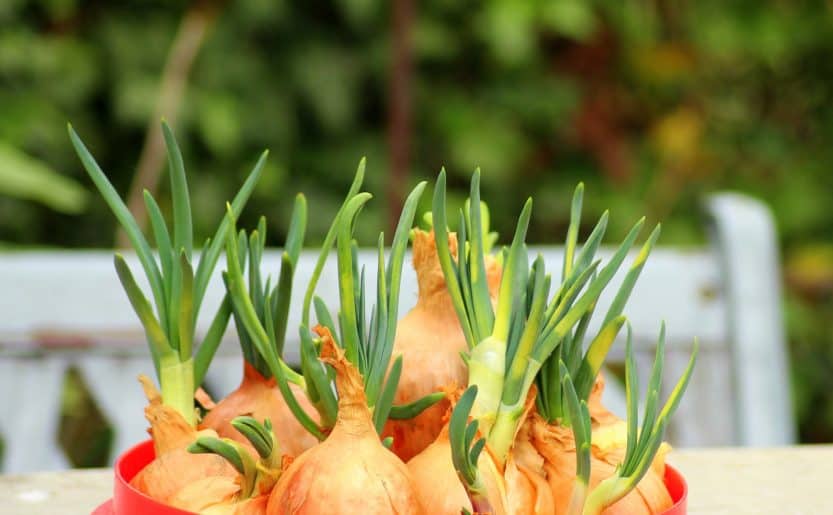
Onions provide foundational flavors in countless dishes, and starting them indoors ensures a timely harvest.
Temperature Tolerance: Optimum germination occurs between 60°F and 75°F (15°C to 24°C). Onions are quite hardy and can survive light frost.
Planting Instructions: Sow seeds 1/4 inch deep in seed trays. Germination typically occurs in 7 to 14 days. Once seedlings are about 6 inches tall, they can be transplanted outdoors.
USDA Zone Insights: In zones 3-4, you can start seeds indoors in February for April transplanting. For zones 5-7, maintain the same timeline. Warmer regions (8-10) allow for earlier sowing to ensure an abundant summer harvest.
Spinach
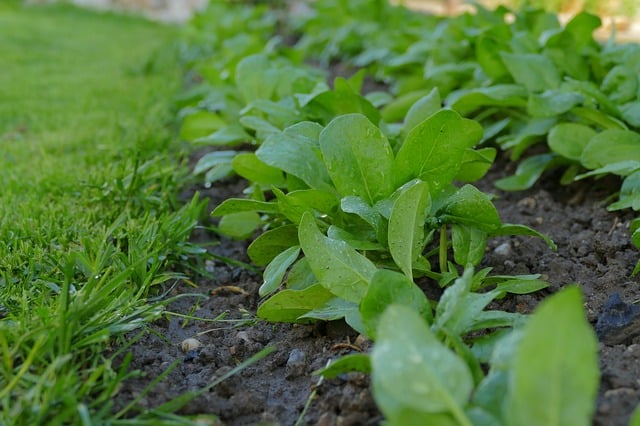
Spinach is a nutrient-dense leafy green that thrives in cooler temperatures, making February a great month to start your seeds indoors.
Temperature Tolerance: Spinach germinates well between 50°F to 68°F (10°C to 20°C) and can withstand frost, making it a robust choice.
Planting Instructions: Sow seeds about 1 inch deep in seed-starting mix. Germination usually takes about 7 to 10 days. Thin seedlings to allow for optimal growth as they mature.
USDA Zone Insights: In zones 3-4, start seeds indoors by mid to late February for outdoor planting around late March. In zones 5-6, use the same schedule. For warmer zones, you can plant directly outdoors or transplant in February.
Flowers To Plant
Adding flowers to your indoor germination list in February can create striking focal points in your garden. Starting flowers indoors not only beautifies the landscape but also attracts beneficial pollinators.
Snapdragons
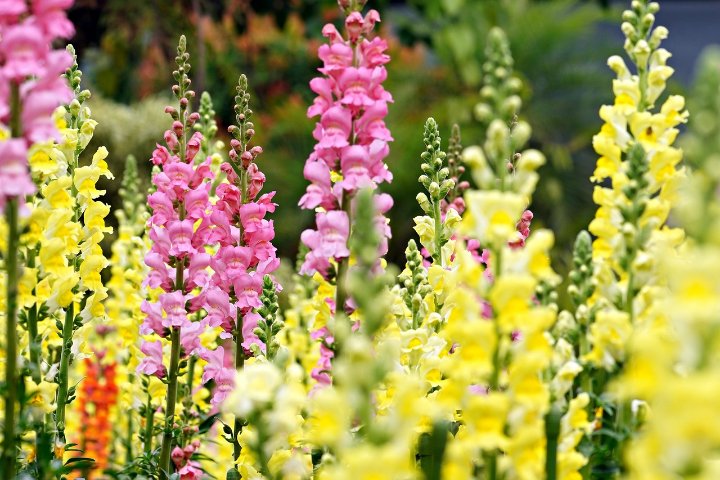
Snapdragons are biennial flowers celebrated for their unique shape and vibrant colors. They thrive best in cooler weather and bloom during spring.
Temperature Tolerance: Snapdragons prefer temperatures between 60°F to 70°F (15°C to 21°C) for optimal growth.
Planting Instructions: Sow seeds on the surface of soil and avoid covering them, as they need light to germinate. Germination can take 10 to 14 days. When seedlings develop a couple of true leaves, thin them according to needs.
USDA Zone Insights: For zones 3-4, start seeds indoors by mid-February to transplant outdoors in late April. Zones 5-7 follow the same timeline, while zones 8-10 permit outdoor sowing as early as February.
Marigolds
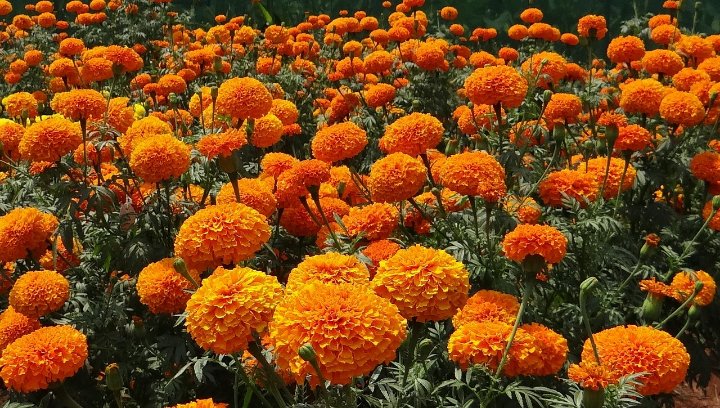
Marigolds offer stunning colors and are known for their pest repellent properties, acting as natural protectors for vegetable gardens.
Temperature Tolerance: Marigold seeds germinate best in warm conditions around 70°F to 75°F (21°C to 24°C).
Planting Instructions: Sow seeds about 1/4 inch deep in pots or trays. Good drainage and light exposure are key, with seedlings needing bright light for healthy growth. Seeds should germinate quickly, usually within 5 to 10 days.
USDA Zone Insights: In zones 3-4, sow in February for late-April transplanting. In zones 5-6, timing remains similar, while gardeners in zones 7-10 can start in early February, enjoying quicker blooms.
Petunias

Petunias are vibrant, cheerful flowers that are perfect for a variety of garden settings, including containers and borders.
Temperature Tolerance: Petunias thrive in warm soil temperatures of 70°F to 75°F (21°C to 24°C).
Planting Instructions: Sow seeds very thinly on the surface of the soil; do not bury them too deep. They require light to germinate and typically sprout in about 7 to 14 days. Provide sufficient light to prevent leggy seedlings.
USDA Zone Insights: In zones 3-4, start seeds indoors by early February for transplanting around late April. Zones 5-7 also benefit from the same timeline, while those in zones 8-10 can plant outdoors as early as late February.
Zinnias
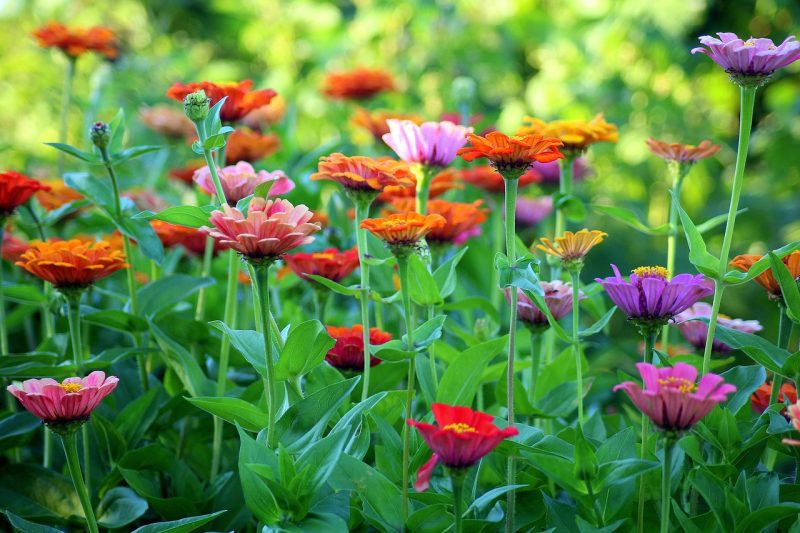
Colorful and hardy zinnias are a favorite of gardeners, known for attracting butterflies and providing a long-lasting floral display.
Temperature Tolerance: Zinnia seeds germinate best in warm conditions, ideally between 70°F to 75°F (21°C to 24°C).
Planting Instructions: Sow seeds about 1/4 inch deep and provide full sunlight and regular watering. Germination typically takes about 7 to 14 days.
USDA Zone Insights: In zones 3-4, sow seeds indoors by mid-February to transplant in late April. Zones 5-6 can follow this planting schedule, while zones 7-10 can even start some varieties outdoors in February.
Cosmos
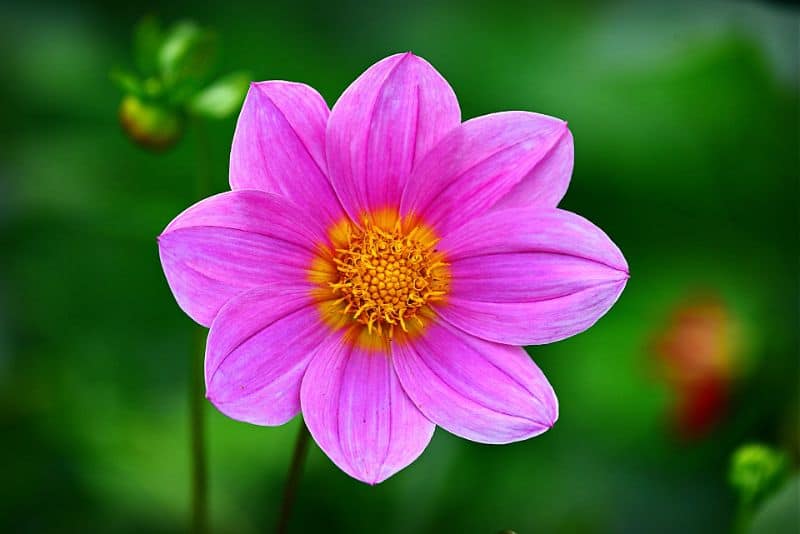
Cosmos flowers are bright and airy, providing an excellent range for attracting pollinators. They’re drought-tolerant and bloom profusely throughout the summer.
Temperature Tolerance: Ideal germination occurs around 70°F to 80°F (21°C to 27°C).
Planting Instructions: Sow seeds 1/4 inch deep, maintaining warm and bright conditions. Cosmos typically germinate within 7 to 14 days. Thin seedlings once they are a few inches tall to provide enough room for growth.
USDA Zone Insights: In zones 3-4, sow seeds indoors from mid-February for late April planting. For zones 5-7, this timing applies, while in warmer regions (8-10), sowings can occur directly in the ground from early February.
Pansies
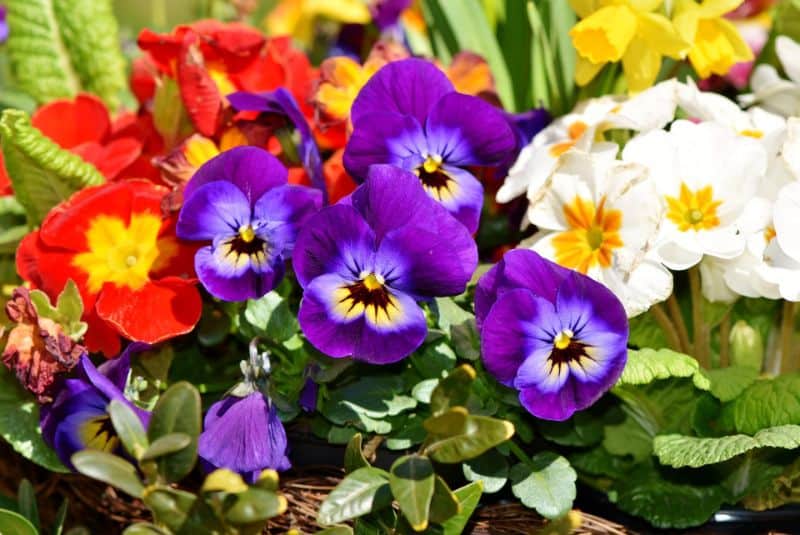
Pansies offer vibrant blooms and can tolerate cooler temperatures, making them excellent choices in early spring gardens.
Temperature Tolerance: Pansies thrive in temperatures of 50°F to 65°F (10°C to 18°C).
Planting Instructions: They can be seeded directly into trays bare, lightly covering with a thin layer of soil. Germination typically occurs in 10 to 20 days. Ensure they receive bright light to promote sturdy growth.
USDA Zone Insights: In zones 3-4, seeds should be planted in late February for transplanting in early April. In zones 5-6, a slightly later transplant can still work, while zones 7-10 allow for early sowing and planting.
Larkspur
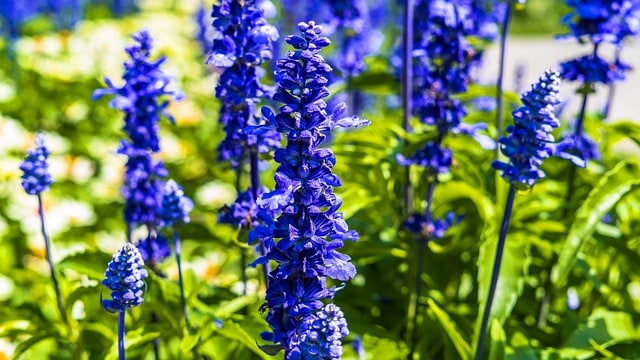
Larkspur’s stunning spires of flowers add height and drama to garden beds. They thrive in cooler weather, making them suitable for early sowing.
Temperature Tolerance: Ideal germination occurs between 60°F to 70°F (15°C to 21°C).
Planting Instructions: Sow seeds as surface-sown, lightly covering them with soil. For successful germination, moisture is key, along with well-draining soil. Germination typically ranges from 10 to 20 days.
USDA Zone Insights: In zones 3-4, start seeds indoors by mid-February for a robust outdoor display in late April. For zones 5-7, the timeline holds similarly, while in regions 8-10, seeds can be planted outdoors as early as March.
Sunflowers
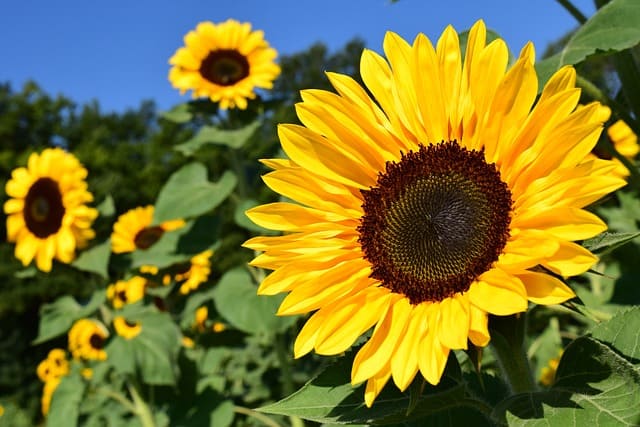
Sunflowers not only brighten up gardens but also provide a food source for birds and pollinators. They are best started indoors for controlled growth.
Temperature Tolerance: Sunflower seeds germinate best at 70°F to 85°F (21°C to 29°C).
Planting Instructions: Sow seeds about 1 inch deep with good spacing to allow for growth. Sunflowers thrive with full sun and well-draining soil. Germination usually occurs within 7 to 10 days.
USDA Zone Insights: In zones 3-4, start seeds indoors by mid-February for transplanting in late April. Zones 5-6 follow the same schedule while gardeners in warmer regions can start sowing directly outdoors in March.
Dahlia
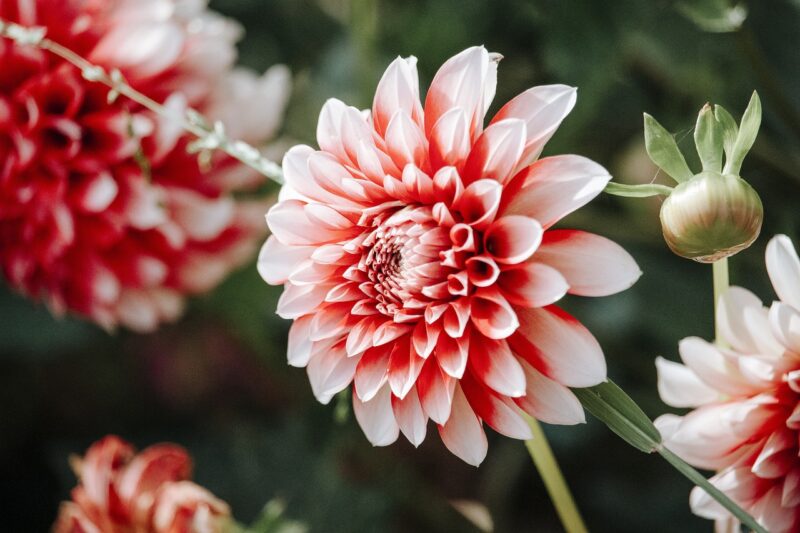
Dahlias are known for their stunning blooms and variety in size and color. Starting dahlias indoors can provide an early start to this late-summer beauty.
Temperature Tolerance: Dahlias prefer warmer soil, typically between 70°F to 75°F (21°C to 24°C) during germination.
Planting Instructions: Start dahlia tubers indoors, preferably after the danger of frost has passed. Ensure they are placed in a warm and bright location to kick-start their growth before transferring them outdoors.
USDA Zone Insights: In zones 3-4, starting indoors in late February leads to substantial blossoms by summer. Zones 5-6 can adhere to this same schedule, whereas those in zones 7-10 can typically plant the tubers directly outdoors after the last frost.
Herbs To Plant
Herbs enhance culinary creations and are valuable in gardens for their aromatic qualities and companion planting benefits. Starting them indoors in February provides a good foundation for growth.
Basil
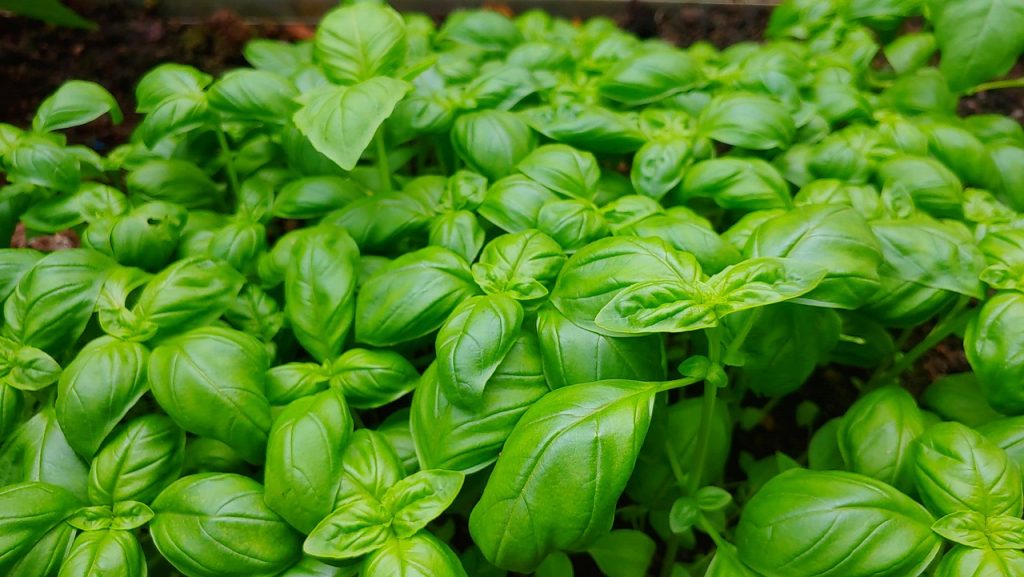
Basil’s sweet aroma and flavor make it a fundamental herb in many culinary homes.
Temperature Tolerance: Prefers 70°F to 80°F (21°C to 27°C) both for germination and growth, making it sensitive to cold.
Planting Instructions: Sow seeds about 1/4 inch deep in seed trays. Water gently and ensure full sunlight for growth. Germination occurs within 5 to 10 days if light conditions are optimal.
USDA Zone Insights: Seeds should ideally be started by mid-February in zones 3-4 for transplanting outdoors by late May. In zones 5-7, follow similar timelines, and in warmer zones (8-10), basil can often be sown directly outside.
Chives

Chives are perennial herbs that will provide fresh green shoots year after year, enhancing various dishes.
Temperature Tolerance: Chives tolerate cold and prefer moderate conditions around 60°F to 70°F (15°C to 21°C).
Planting Instructions: Sow seeds about 1/4 inch deep in seed trays. Germination takes about 7 to 14 days. Once they reach a few inches in height, thin them out to avoid overcrowding.
USDA Zone Insights: For zones 3-4, starting seeds in early February is ideal for transplant in late March to early April. In zones 5-7, this timeline carries over, while in warmer zones, they can often be planted directly outside earlier.
Oregano

Oregano is essential for Mediterranean cooking and is easy to start indoors.
Temperature Tolerance: It thrives between 65°F to 75°F (18°C to 24°C), developing best in sunny positions.
Planting Instructions: Sow seeds about 1/4 inch deep. Germination occurs in 7 to 14 days, but they require bright light to ensure compact growth.
USDA Zone Insights: For zones 3-4, initiate indoors by mid-February for planting around mid-May. Zones 5-7 will follow the same schedule, while warmer areas allow for improvements based on frost conditions.
Thyme

Thyme is a hardy perennial herb valued for its culinary and medicinal properties.
Temperature Tolerance: Ideally prefers 60°F to 70°F (15°C to 21°C) for vigorous growth.
Planting Instructions: Sow seeds about 1/4 inch deep. Water carefully, and ensure that they receive bright, direct light. Thyme typically germinates in 10 to 14 days.
USDA Zone Insights: For zones 3-4, sow in mid-February for a late April transplant. For those in zones 5-7, adhere to similar timelines, while gardeners in 8-10 can plant directly earlier in the season.
Parsley
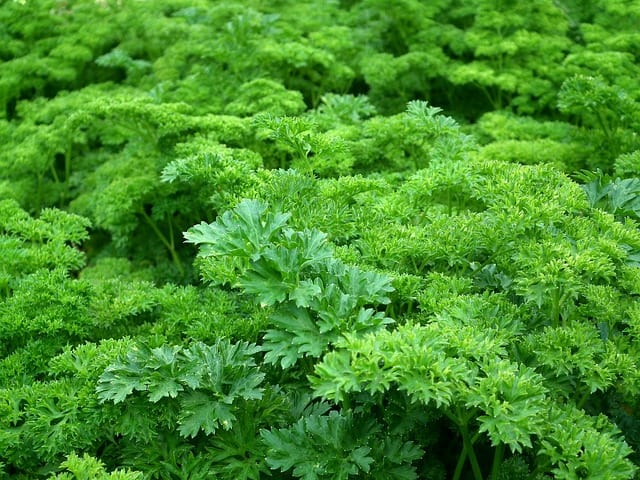
Parsley is a versatile herb widely used for flavor and decoration.
Temperature Tolerance: Grows well in cool to moderate temperatures of 60°F to 70°F (15°C to 21°C).
Planting Instructions: Seeds are best sown about 1/4 inch deep, and because parsley seeds can take longer to germinate (14 to 30 days), patience is key. Maintain adequate moisture in the soil.
USDA Zone Insights: In zones 3-4, sow seeds indoors in late February for outdoor transcription in mid-April. For zones 5-7, this remains consistent, while zones 8-10 can begin planting sooner.
Cilantro

Cilantro is favored in many worldwide cuisines and is classified as both a herb and a spice.
Temperature Tolerance: Ideal growth occurs between 50°F to 85°F (10°C to 29°C). Fast growth may slow down once exposed to higher temperatures.
Planting Instructions: Sow seeds about 1/4 inch deep; cilantro seeds will germinate in about 7 to 10 days with enough light. Thin the seedlings for better air circulation and growth.
USDA Zone Insights: For zones 3-4, start seeds by late February to transplant in late March. In zones 5-7, this timeline remains consistent while in warmer areas, cilantro can be sown directly outdoors in February.
Dill
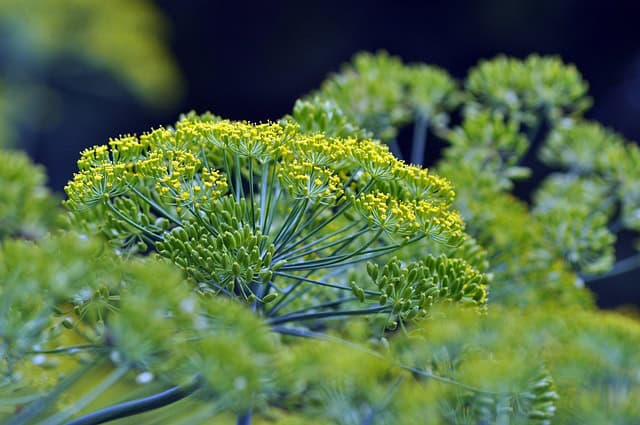
Dill, with its distinct aroma, is excellent for flavoring various dishes, especially pickled foods.
Temperature Tolerance: Best germination occurs when temperatures are around 70°F to 75°F (21°C to 24°C).
Planting Instructions: Sow seeds about 1/4 inch deep. They generally germinate within 10 to 14 days and should be thinned properly to allow adequate spacing.
USDA Zone Insights: In zones 3-4, sew indoors by mid- to late February for planting in late-April. Zones 5-7 can follow this schedule, while warmer zones enable early outdoor sowing in February.
Sage
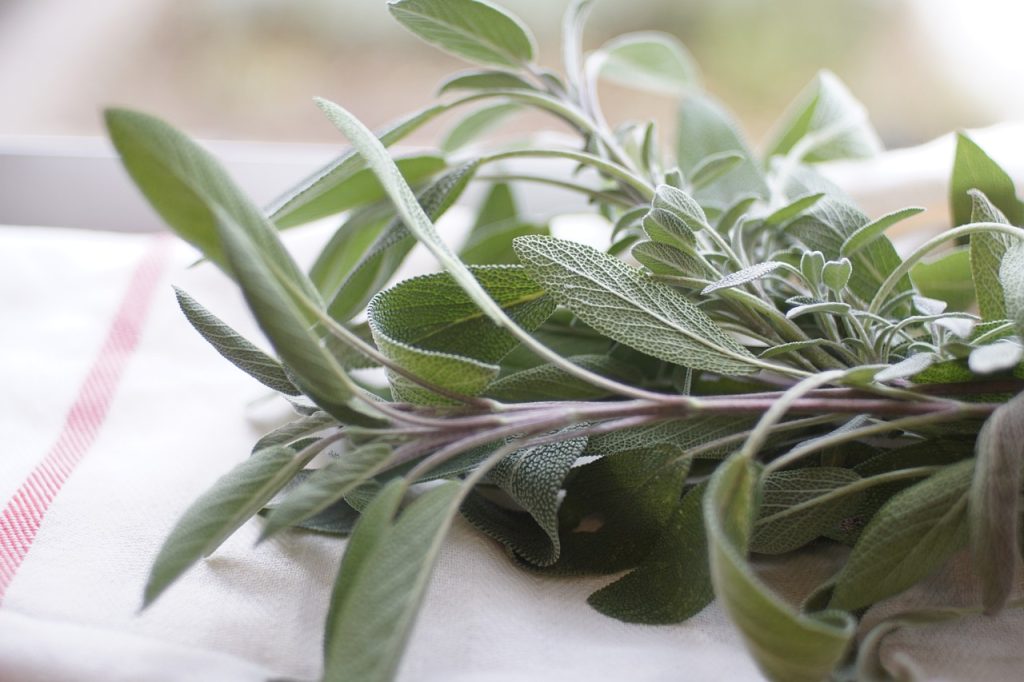
An aromatic herb, sage is renowned for its culinary versatility.
Temperature Tolerance: Sage prefers a slightly warmer range of 65°F to 70°F (18°C to 21°C).
Planting Instructions: Sow seeds about 1/4 inch deep. Sage takes about 7 to 14 days to germinate. After seedlings are about 2 inches tall, the plants can be thinned for better growth.
USDA Zone Insights: For zones 3-4, February sowing is advisable, while in zones 5-7, follow the same schedule. Warmer regions facilitate earlier outdoor sowing options.
Rosemary

Rosemary thrives in warm conditions and is revered for both culinary use and aromatic qualities.
Temperature Tolerance: Rosemary requires warm conditions, ideally around 75°F to 85°F (24°C to 29°C).
Planting Instructions: Start rosemary seeds indoors, planting them at about 1/4 inch depth. Due to slow germination, which can take up to 21 days, providing consistent moisture and warm temperatures is vital.
USDA Zone Insights: In zones 3-4, sow seeds in February for transplanting post-frost in late spring. Continuous care will be needed in colder zones, while the warmer regions can see earlier direct sowing.
Mint
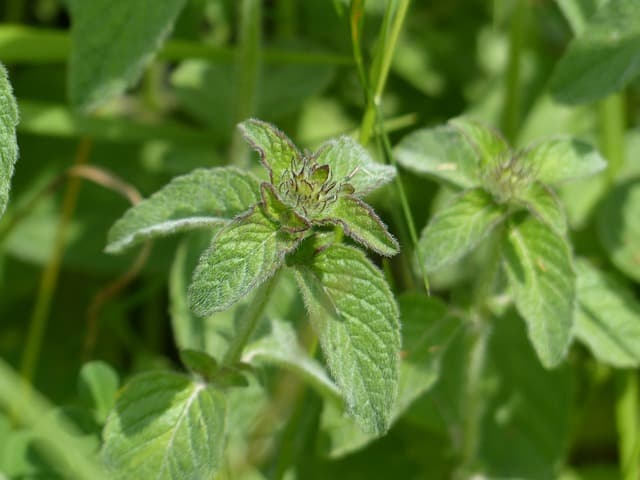
Mint is a vigorous herb known for its refreshing flavor, both in culinary applications and beverages.
Temperature Tolerance: Thrives in a range of conditions but growing best between 60°F to 70°F (15°C to 21°C).
Planting Instructions: Mint seeds should be sown 1/4 inch deep in pots or trays that encourage airflow. Maintain consistent moisture and bright lighting to ensure proper growth.
USDA Zone Insights: In zones 3-4, seeds should be started in February for a late March to April transplant. For zones 5-7, stick to a similar schedule, while warmer zones may allow for early direct sowing.


